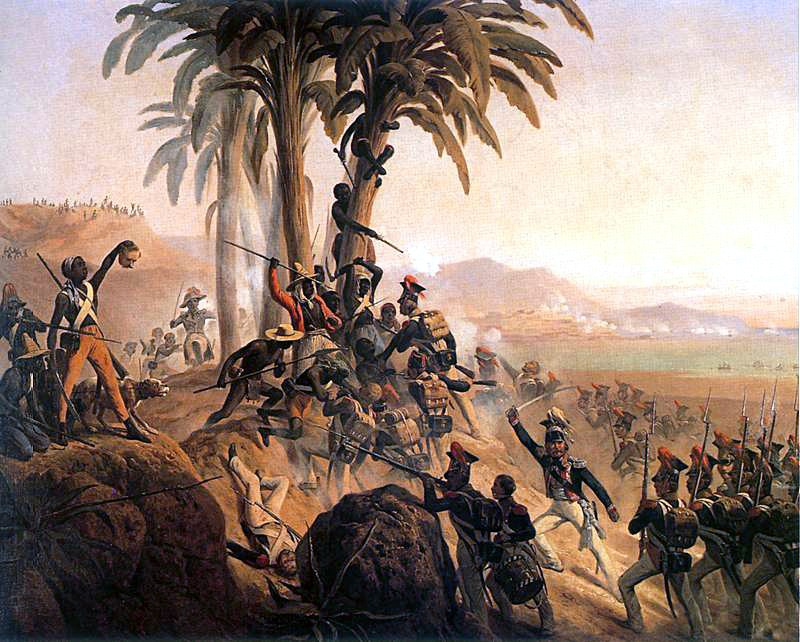
Máquina de Metáfora
For the past month or so, me and my classmates have been working on a PLP classic project; Metaphor Machines. Our task was to choose a revolution, then build a Rube Goldberg machine in which each action on the machine was a metaphor for something that happened in our revolution. My group which consisted of Luca, Melanie, Logan and I, chose the Haitian Revolution. We were all fascinated by the idea behind the revolt and we though it would make for some strong metaphorical uses.

We started off the unit by learning about Crane Brinton and his novel, “The Anatomy of Revolution”. Brinton’s theory is based upon the idea that for something to be classed as a revolution, it needs to follow four stages. These stages are similar to the stages found when someone has a disease. The first stage, the ‘Symptoms’ stage, describes that the first step of a revolution is basically when the public (usually the lower to middle class) is angry at the government. The government doesn’t deal with it, and from there we go to the next stage; ‘The Rising Fever’. This stage consists of the public rising up against the government in hopes of fighting the system. The government once again cannot fix the situation and a new government (this may not always be what you think of as a government) is created, led by the public. They are attempting to replace the current government if they do not change their ways. ‘Crisis’, the third stage, usually starts with the overthrowing of the old government, backed by the supporters of the new government. This is when all out war breaks. A civil war may happen as a result of the government trying to crush the rebellion. The outcome of this is not always the same, there is no way to guarantee the success of the rebellion because of the need of popular support and the fact that the public are in a poor economic state. If the rebellion is a success, the fourth stage known as the ‘Convalesce’ stage takes place. After overthrowing the old government, the new government begins to stabilize the country and life returns to “normal”.


Crane Brinton’s theory really helped us understand how a revolution works from start to finish and made it a lot easier to create metaphors and to dissect the key points from the Haitian Revolution.

We had to complete research on the Haitian Revolution as we only knew the basics of how it all went down. After merging our research we created the five main events that we would base our machine on. These events were basically the biggest and most drastic occurrences that made the largest impacts on the timeline of the revolution. The events followed Brinton’s theory in the sense that we had all the parts to a defined revolution. We then had to decide what the machine would consist of, physically. We wrote down different materials we could use to help get our ideas flowing. It took a while to come up with a definite list and idea of the whole machine, but after we did, we distributed the materials around our group and gathered up everything we needed.

We used Google Docs to collaborate with our group
From there on it was all about building and creating a full-size sketch and a blueprint of our machine. The physical creation of our machine took much longer than we anticipated. We encountered a number of setbacks without a quick way of fixing them. In hindsight, we should have tested out more of our materials before building other parts of the machine that relied on them so much. This would make it much simpler to create a full, working machine and would have smoothed out the bumps we encountered along the way.

All in all I think this was a pretty stressful project but I’m glad we took extra time to complete it in great quality. Our video turned out extremely good, and I don’t mind that it was one day late seeing as we didn’t have to go back and redo anything drastic, unlike other groups. I really built on my teamwork during this time and even though I argued with my team member it was all in the nature of perfection, something I strive for much too often.